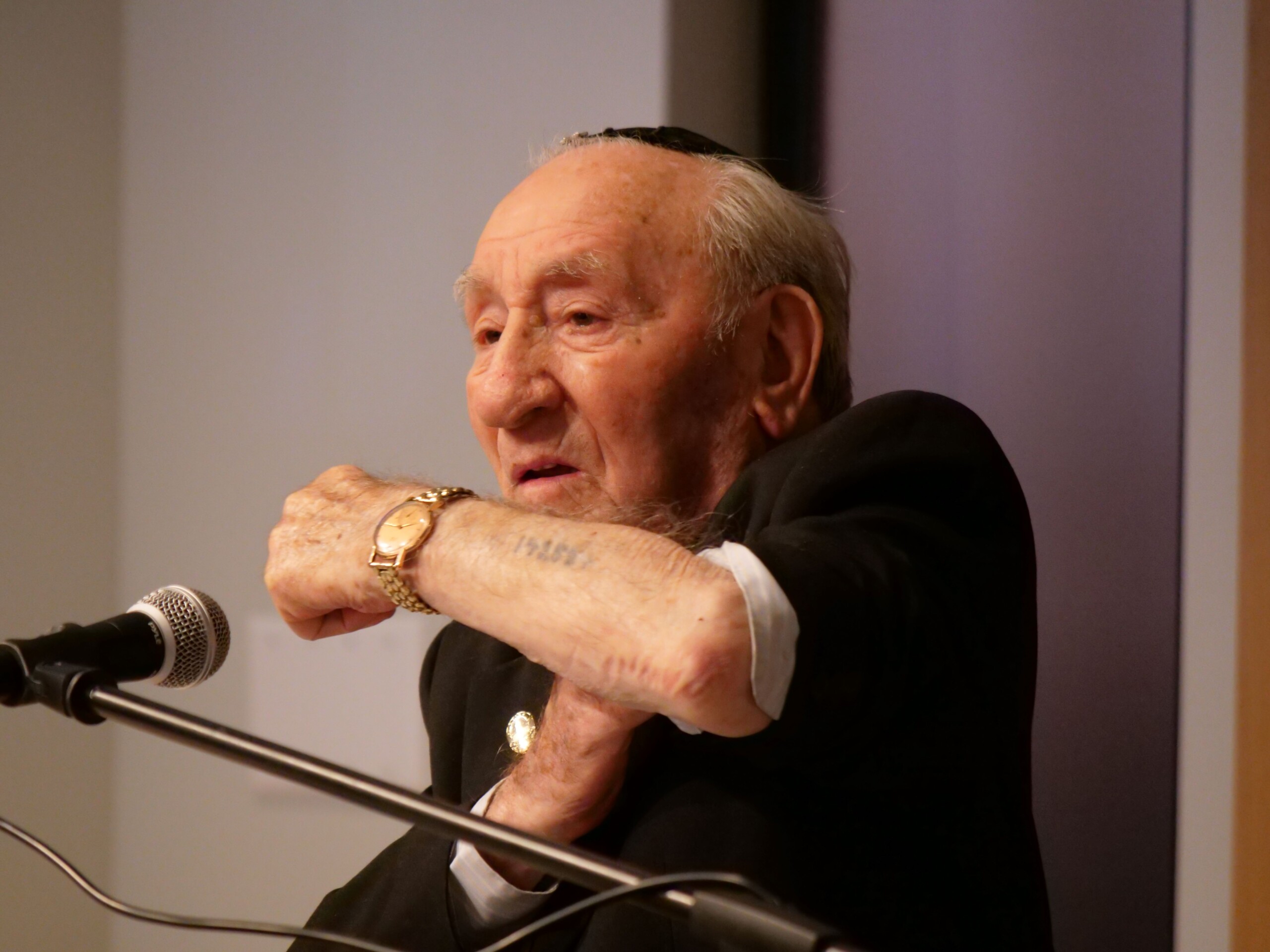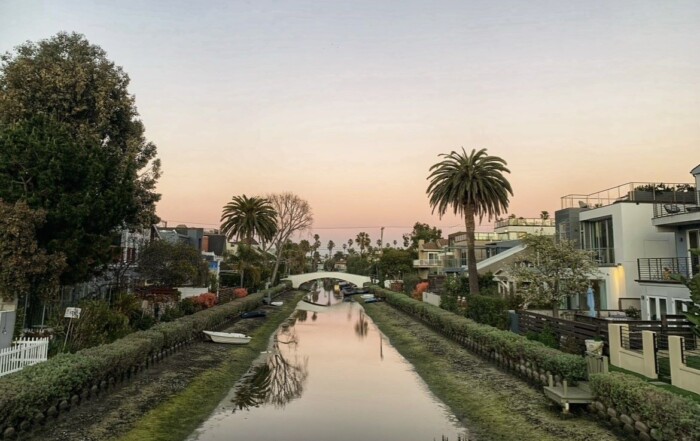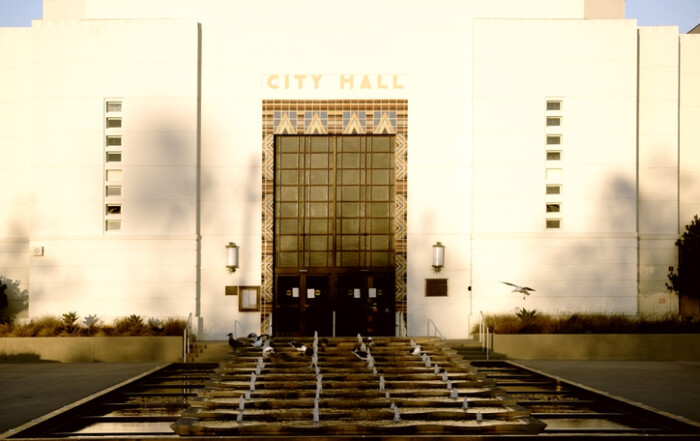The first time Joseph Alexander encountered Josef Mengele was the same as many meetings with the Doctor of Death — one where one’s life was in his hands.
Seeing the group of elderly and young Jews that he had been grouped with, Alexander — known then as Idel — knew he had to make a gamble with his life on the line.
Now 101 years old, the Holocaust survivor came to tell his story at The Shay Hotel in Culver City on Thursday, February 15 at an event hosted by Chabad of Culver City.
Born in the Polish city of Kowal, Alexander suffered through some of the most well-known atrocities committed in World War II. He told the story of how his uncle was paraded around the town square where they lived, with German police telling people they had 10 minutes to gather in the square to be rounded up and taken away, but for reasons he doesn’t know, the house he lived in was passed over.
But this respite was only temporary, as the soldiers were expected to return just three days later to gather the rest of the Jewish people they left behind. Remembering what occurred days ago, Alexander’s father took his family’s fate into his own hands.
“We are not going to wait for them to give us 10 minutes,” Alexander recalled his father telling him.
The family loaded up two wagons with their possessions and set off for the town of Blonie, just over 17.5 miles west of Warsaw. The family rented an apartment there, and they lived with a brief peace.
“There, life was going on almost as normal,” he said. “People were still in business, but everybody had to go to work.”
Two weeks later, Alexander was taken to his first forced labor camp in Kampinos Forest nearby. The 12 camps he ended up being interned at during the war had him working hard labor for a variety of German projects; this first camp he was forced into in October 1939 him to work on canals.
While prisoners were only expected to work six days a week and could return home on weekends, the work conditions the prisoners were forced into left them susceptible to illnesses and infections.
“We were building a canal, and we stayed in the weather without boots,” Alexander said.
This lasted for six weeks before one weekend, covered in sores on his arms and legs and battling a blood infection that he got from his work in the camps, Alexander returned home and declared he’d had enough.
“I went home one weekend and said, ‘I am not going back,’” he said.
That camp would end up being the least of his future problems, as a wall was being built that would change the lives of hundreds of thousands of Jewish people forever.
On October 16, 1940, German Governor-General Hans Frank announced the creation of the Warsaw Ghetto, and all Jewish people living within a 60 km radius were ordered to move to the Ghetto. There were about 450,000 Jewish people contained within an area of just over 3 square kilometers when it was first instituted and would become one of the most recognizable symbols of Jewish oppression during World War II.
Alexander did not mince words in describing the conditions he lived through there.
“The life in the ghetto…you can’t even imagine how terrible it was,” he said. “Every morning, you walked out and there were dead people on the sidewalks, the streets, everywhere.”
He lived in the ghetto for five months before his family attempted to return home. They paid off the guard at the gate of the ghetto and split up with a plan to meet on the outskirts of town. It was the last time he saw his parents and several of his siblings.
Alexander was free at home for just three days before an order was sent out: all Jewish people from ages 16-60 were ordered to report to the local schoolhouse. There, Alexander would be shipped off to another camp, beginning a long journey that took him to a total of 12 concentration camps in six years.
At the Steineck camp, he and other prisoners were tasked with helping to build a dam. Getting just a small piece of bread, a cup of coffee, and some spinach or potato peel soup while working himself to the bone, but he found relief from the civilians who came to work with the prisoners in the camps, who would give him extra food to survive.
“The only way you could survive is because you were working with civilians. It was the only time you could manage a little extra food, and that was the only way you could survive.”
After six weeks, Alexander bounced around between several camps. He worked on sewer lines at Golnau, laid cobblestone at Remow, and laid railroad tracks at Kreising. But it was his experience at the most horrific camp — Auschwitz-Birkenau — that was perhaps the closest Alexander had been to losing his life during the war.
Those who could walk out of the cattle car that Alexander and others were brought in were lined up in rows of five where they came face to face with one of the most infamous Nazis in all of history. Josef Mengele had long since acquired notoriety and a terrifying nickname when Alexander first arrived at Auschwitz.
When Alexander first encountered Mengele, the Doctor of Death told the surviving Jewish people that they were going to be separated into two groups. Alexander noticed that the left side group that he was put in mostly contained the young, sick, and elderly.
“If I had just come from home, I wouldn’t have known the difference,” Alexander said. “But I had already been to several camps.”
It was midnight and dark, which Alexander credits as a major factor in his survival. In a desperate attempt to stave off the fate he saw coming for the group, he waited until Mengele took a moment to look elsewhere, then quickly dashed for the more healthy group.
Alexander ended up making the six-kilometer walk towards the camp along with the other group. The group to the left was sent directly to the gas chambers.
Fortunately, the war didn’t last forever, and Alexander could see the light at the end of the tunnel while participating in one of the infamous Nazi death marches.
“One night, the guard disappeared…then the German police took us into a village, then they disappeared,” he said. “Between 12:00 and 1:00, an American tank moved in, and we were liberated.”
That long chapter of his life came to a conclusive close when Alexander moved to America after the war, arriving in New York on May 29, 1949. He moved to Santa Monica in 1950 and has remained in California to this day.
Members of the crowd were then given the time to ask questions. Of the many questions related to his memory, one stood out the most.
“How did you find the will to survive it all?”
To such a deep question, Alexander had a very simple answer: because he simply felt he had to.
“I never thought of giving up, I never lost faith, I never stopped believing in God,” he said. “I may have a bad day today, but I hope tomorrow will be a better day.”
Photo taken by the author.
Stay informed. Sign up for The Westside Voice Newsletter
By clicking submit, you agree to share your email address with Westside Voice. We do not sell or share your information with anyone.








